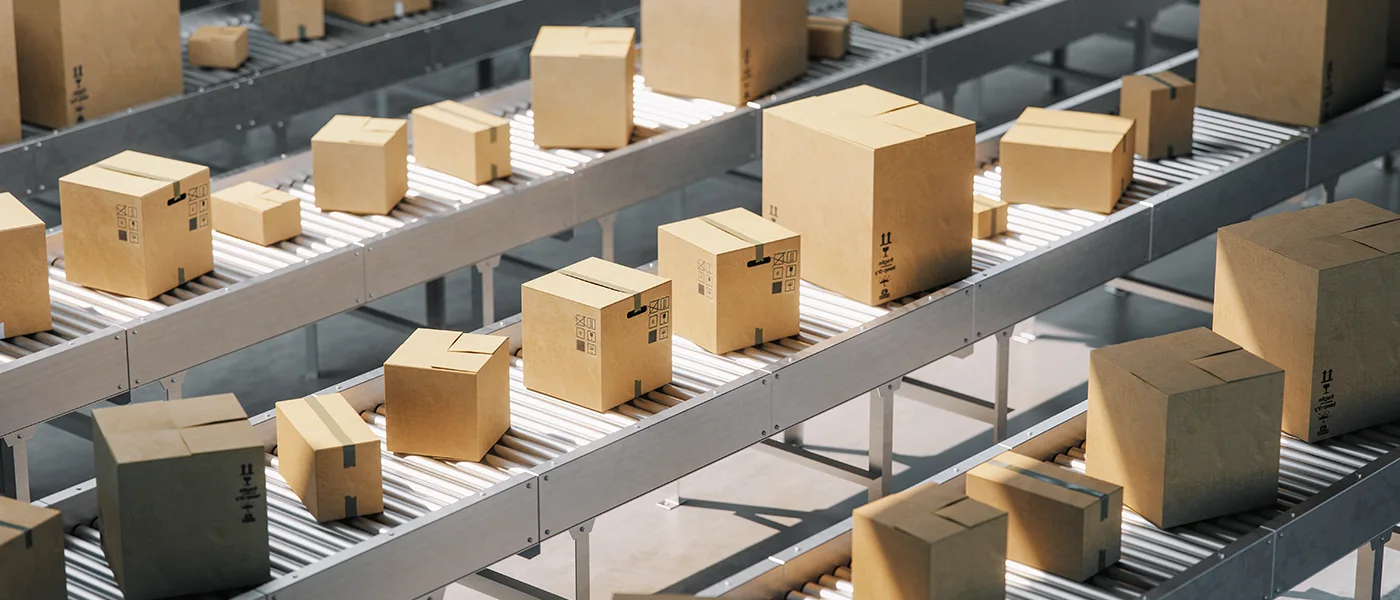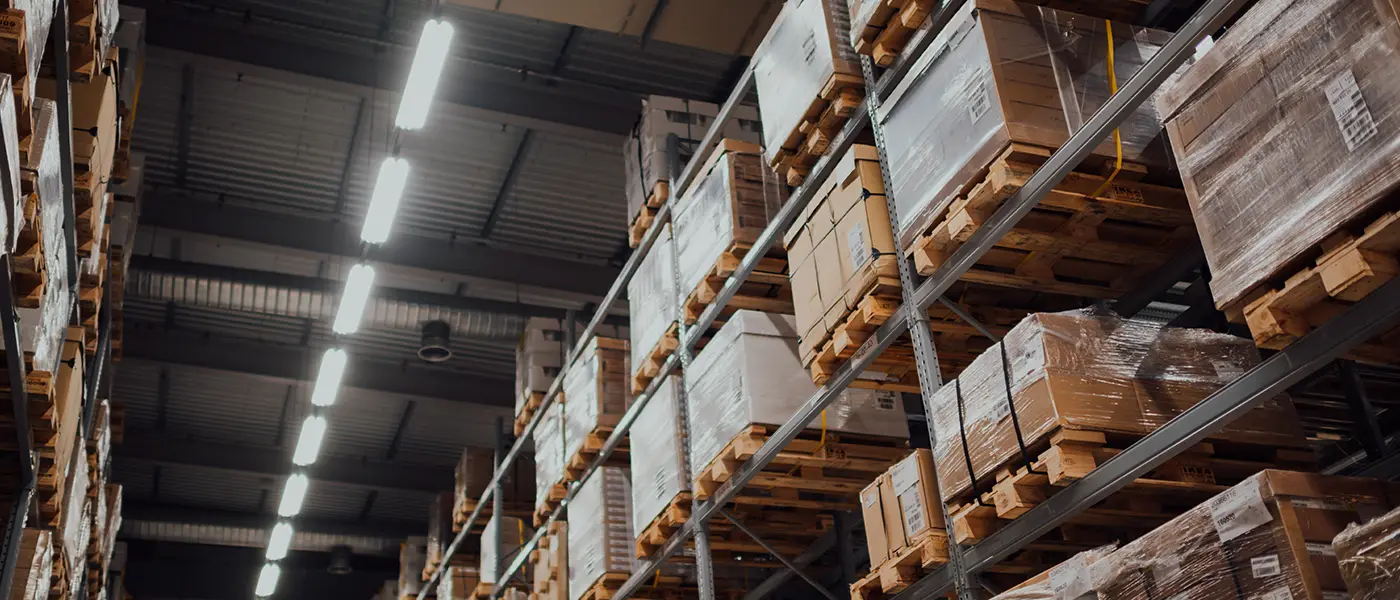A robust logistics network strategy is often the key driving factor in meeting customer demands. Irrespective of the size of your business, a reliable logistics network is often what drives the supply chain and contributes to the growth of your organization.
But what is a logistics network exactly? How does it determine the success or failure of your business? And how exactly do you keep it in check so that you ensure better bang for your buck in the longer run?
Read along as we answer these questions and explore the different ways a logistics network designs can be built to serve your organization, and keep your firm on track with the changes in the industry.
Logistics Network: Planning and Strategic Design
A logistics network consists of everything concerning the movement of a product. It stretches from the dispatch of the finished product to its delivery to the customer.
Moreover, in order to offer a specified level of customer service while also ensuring high profitably, a group of strategies known as logistics network planning need to be employed to calculate trade-offs between inventory levels, the total number as well as the location of warehouses, and the cost of transportation.
It is a tried-and-true scientific method used to determine the costs and service levels that warehouses need to offer in order to achieve specific customer service goals.
What Is Logistics Network Modeling?
Logistics is anything to do with the movement of goods. Logistics network is a series of systems and processes that are grouped together to design, create, and market a product. This logistics network must be revised every time the company adopts a new business model, enters a new market or develops a new product, they need to revise their logistics network.
The process of creating a new logistics network with the advent of a new business structure is called logistics network modeling. This entails the simulation of a potential logistics network plan to study its effectiveness.
While creating the logistics network model, a company needs to looks into the location-related elements, such as:
- Existing workforce in the area
- channels for distributing and shipping
- Governmental incentives
- conditions of customs
- prerequisites for security
- supplier and client location
Examining these conditions can help create a logistics network that is efficient and cost-effective.
Types of Logistics Network Modeling
Logistics network models allow a firm to examine criteria such as expenditure and network performance, among other factors. However, there are a few different modeling types that can be used to assess a logistics network. They all come with a range of pros and cons that have to be considered. Some of them have been discussed below.
- Optimization Modeling
Optimization modeling is a method based purely on a mathematical formula that is used to deduce the procedures that can offer the best outcomes. The model is devoid of a subjective input and works entirely on data and assumptions.
The data points that the models evaluates include:
- Standard of customer service
- Location and number of distribution centers
- Number of manufacturing facilities
- Distribution centers
- Inventory requirement
An example of an optimization model is the Linear programming model or LP. This model has helped bridge the gap between supply and demand limitations within manufacturing plants, distribution centers and markets.
LP can help determine the ideal facility distribution pattern depending on the identified constraints, with the objective of minimizing costs. Nevertheless, it excludes any objective insights and therefore, does not count any possible human errors.
- Simulation Models
As the name suggests, the simulation model emulates any and all of the real world changes that could affect the cost of the logistics network. A simulation model is most useful when companies simply wish to look at the different effects of any changes that are made on an already finalized model.
To create a simulation model that works, firms need to gather an extensive amount of information on factors including:
- Transportation
- Warehousing
- labor costs
- material management
- Levels of inventory
This data let’s firms modify the constraints while zeroing in on a model that correctly reflects the modifications. To summarize, a simulation model does not offer a perfect model to the user. It simply helps evaluate the effects of a change.
- Heuristic Model
Heuristic models, like simulation models, do not offer ready-made models. Rather, they help in deducing what might be an optimum model for a specific logistics network.
A heuristic model does not necessarily offer a guaranteed solution, but it can break the problem down into a more manageable size. Moreover, many heuristic models may also offer contradictory answers to similar problems. Nevertheless, these answers can offer a valuable insight into the development of an effective logistics network.
To demonstrate — the heuristic model can quickly determine the most convenient location for a distribution center based on the options available.
What Small and Midsize Businesses Need to Know About Logistics Network Planning
For small and medium businesses, logistics network planning (LNP) is a critical component of the supply chain. It is a procedure that aids companies in choosing the optimal logistics approach to guarantee that their products are manufactured and distributed smoothly. This can involve warehouse analysis, inventory management, route optimization, and thorough cost analyses of all available options.
When correctly utilized, LNP can assist companies in offering the best customer service while incurring the least amount of building, transportation, inventory, and location-related costs.
LNP is required to make sure that the newly introduced service or product will have the biggest impact on customers. Businesses can quickly optimize their routes while ensuring that quality standards remain consistent from the time an order is placed until it is delivered by carefully taking into account time and distance constraints as well as other factors like demand forecasting, production control systems, labor resource management requirements, and legal regulations related to transportation needs.
LNP is also crucial when extending operations into new markets or regions with contrasting economic conditions demanding alternative strategic approaches. Businesses can develop tailored solutions that are relevant to the targeted location or demography and boost sales performance by keeping operations costs low in certain places by using data on parameters such as population characteristics, socioeconomic conditions, and regulatory framework.
How to Design An Effective Logistics Network
Logistics network design constitutes one of the most complex strategic decisions that must be addressed for long-term efficiency. In order to operate at the lowest possible price while offering superior customer service, managers must be responsive enough to restructure distribution networks more regularly.
This can be done in seven distinct steps.
- Tailor the process
The network design team begins by outlining the goals and the broad parameters of the project with an already established outcome. This process is essential as it helps tailor and specify the project’s scope, goals, and outcomes at a high level. Moreover, once the broad structure for a project has been determined, specific design steps can also be discussed, along with a process of dissemination.
The team must then specify the essential inputs, tools and equipment, and outputs for each phase. This allows subsequent processes to be enhanced with knowledge gathered from previous steps, thereby forming a comprehensive plan.
- Determine what factors need to change
As discussed many times throughout this article, it is of the utmost importance to update and change the logistics network design as the business evolves. Businesses change and the logistics should therefore have scope for change. Some of the factors that most commonly change include:
- Customer demographics
- Cost reductions
- Changes in the supply market
- Evolution in manufacturing process
A network that has not seen any change in a while might especially need an audit of one or all of these factors.
- Audit the as-is network
This step entails devoting the time and money required to audit costs, lead times, and other service requirements of the current network. During this companies are encouraged to perform the following tasks:
- Collect data and business details
- Map the existing system
- Chalk out the primary operations and features of the network
- Assess processes in relation to the objectives
- List the existing discrepancies between strategy and capability
Once the audit has been performed, businesses can go on to create strategic plans to close the identified gaps.
- Chalk out network alternatives
Various modeling techniques can be used to evaluate network alternatives. Finding the system with the best cost-efficiency at the chosen strategic service levels is the overarching objective of this step. To ensure that each alternative can achieve the goals, it must be assessed against the numerous objectives listed in the first step. The outcome should then be suggested for the number of facilities, as well as their general function and location.
- Scout facilities
At this stage, the list of functions include:
- Conducting quantitative analysis
- Adding qualitative considerations
- Whittling down the list until you uncover ideal site choices
Then, based on the prioritized selection criteria and the findings of the analysis, a location selection team needs to be established to scout potential sites.
- Finalize the to-be-state
The management must now be given a complete plan. In fact, they may also request additional research and they may accept the recommendations with minor revisions. Alternatively, they may ask you to go back to the drawing board for a complete overhaul of the existing plan. To reduce capital expenses, it could be important to find strategies to leverage some current assets. Nevertheless, after approval of the final plans is when the implementation begins.
- Develop the implementation plan
Plans will probably need to be put into action through a number of separate projects, such as purchasing new facilities, upgrading current ones, or hunting down new 3PLs. Each of these designs will require a different budget, schedule, and various other variables. Moreover, the sequencing of these projects will be determined by a general implementation plan, which will also be used to monitor their advancement against the logistics network’s overarching goals.
How 3PL logistics networks can streamline your supply chain workflow
Owning and operating an individual logistics network can be difficult, expensive, and time-consuming. A single mistake can disrupt the entire supply chain, leaving customers disgruntled.
Therefore, In order to help their businesses grow, many quickly expanding e-commerce enterprises collaborate with 3PLs, which offer the logistics network, technology, and knowledge required to make any business a raging success.
A 3PL can offer a whole range of services to streamline things for an e-commerce business. These include:
- An existing logistics network: To build a logistics network is to find labor, space, negotiate with vendors, and find local courier companies, among a whole range of other undertakings. A 3PL already has these facilities in place, so you can simply focus on your business and leave the heavy-lifting to the experts.
- Technology for effective inventory tracking: Technology, especially novel ones, are often expensive. But with a 3PL subscription you can access sophisticated inventory tracking software without breaking the bank.
- A well-spread out network of distribution centers and warehouses: Your business is in a particular location, but you can receive orders from all over the place. 3PLs have an excellent network of distribution centers and warehouses in place that can help you store and ship products across the country, without having to spend a ton on your warehousing system.
- Express and 2-day delivery options: Offering quicker shipping is generally the one thing that can address the issue of cart abandonment. With 3PLs, you can ensure you are able to offer that to your customers.
Conclusion
Logistics is an unparalleled source of growth. It is the one aspect of business that can become the difference between a good customer service experience and a bad one. Therefore, having your logistics network meet the correct standards is absolutely crucial to business success.
Moreover, with the advent of the many different logistics network strategies and models to determine their efficacy for a particular business, it is no longer a difficult aspect to quality control.
Orders can be delivered to clients quickly with a high-performing logistics network, which can aid in the expansion of your e-commerce business. Even though logistics can be challenging, mastering them can give your expanding business a significant competitive edge.
So, don’t wait any further – find yourself a 3PL partner to handle your logistics, today!
FAQs
What are the advantages of a logistic network?
Having a well-laid out logistic network is directly responsible for the success of any business -small or large. However, the more pointed advantages may include:
- Improved collaboration opportunities with suppliers
- Inventory management and cost optimization
- Improved business growth
- Continuous improvement opportunities
How do you build a logistics network?
Logistics networks are built using an elaborate procedure that involves determining the expected results, the factors that can contribute to it, and their planned and precise implementation. In addition to this, a logistics network design may include scouting facilities, auditing existing processes and simulating potential designs to determine their efficacy.
What are the logistics costs?
Logistics cost is the expense incurred by a business due to its logistical processes. Having lower logistical costs is often what makes a business competitive and allows them to make bigger margins of profit.
What does a logistics network consist of?
A logistics network consists of manufacturers, suppliers, retailers, wholesalers and most importantly, consumers. Moreover, it covers aspects such as transport, warehouse and distribution centers under its purview.
How can a 3PL help a logistics network?
Developing a logistics network is an extensive process that can often require a ton of resources and require a lot of planning; not to mention it can be extremely costly. A 3PL with its existing network of warehouses, distribution centers, trained workforce, and Hi-tech tracking technology, eliminates all of the hassles of drawing up a logistics plan.





